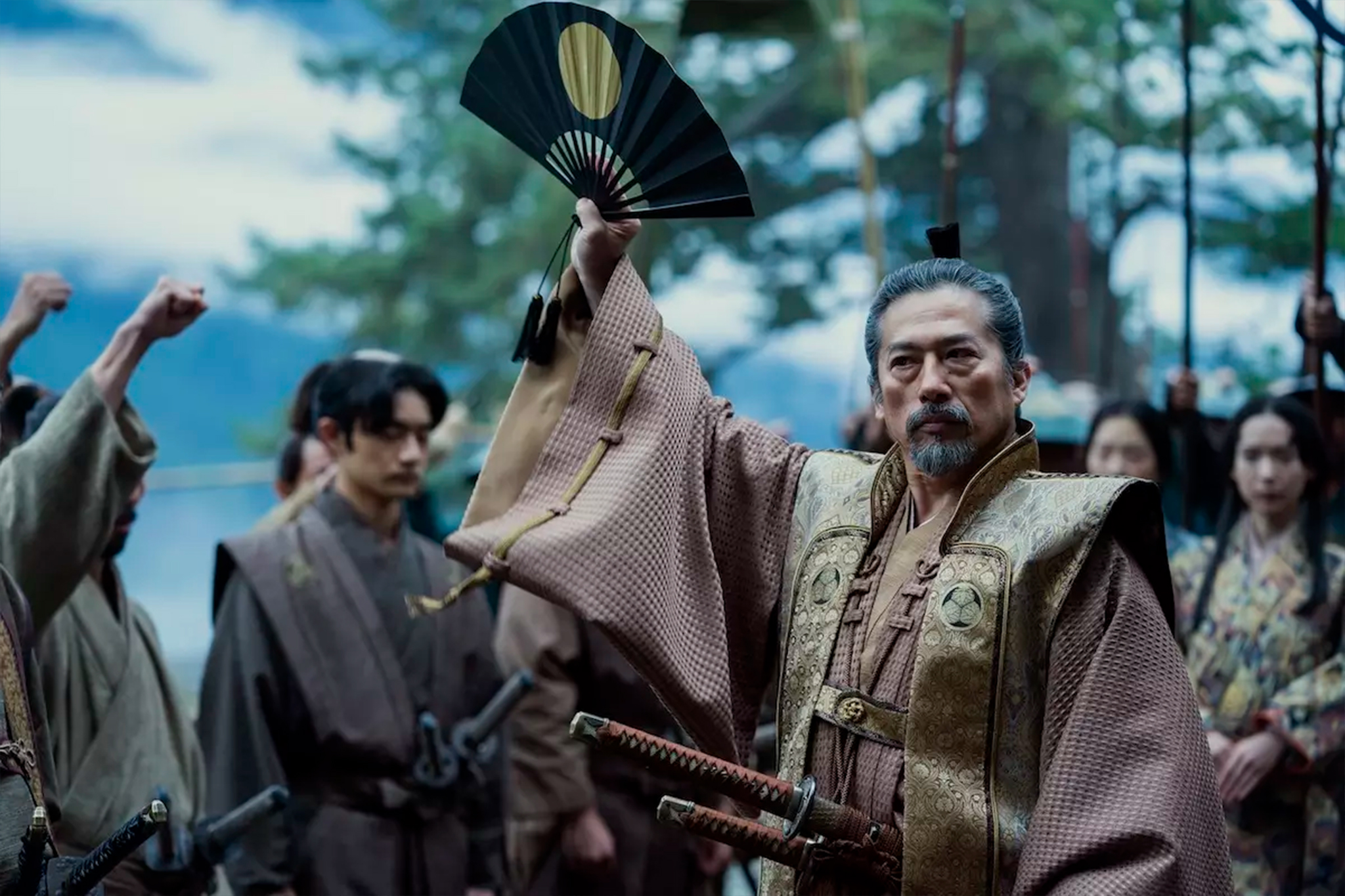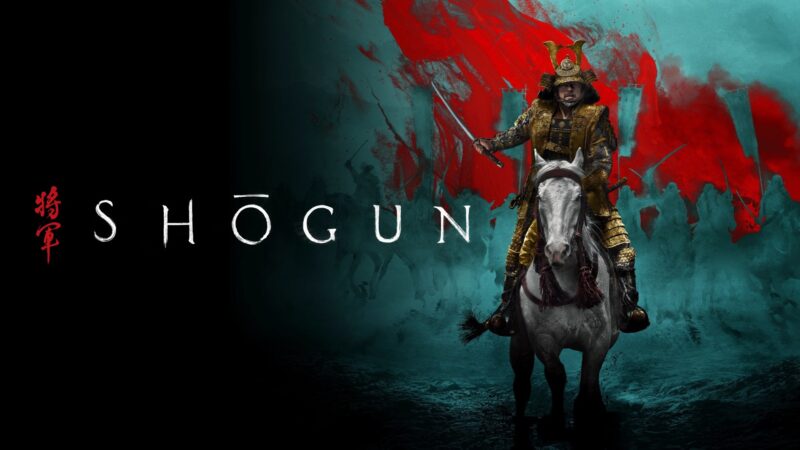The monumental FX series “Shogun,” adapted from James Clavell’s eponymous novel, emerged as a much-needed antidote for those long-starved for a medieval epic. It not only met but exceeded the lofty expectations set by its trailer, leaving an indelible mark on 2024 across all cinematic perspectives. In the year when the second season of “House of the Dragon” is set to air, “Shogun” stands as a formidable contender, even daring to claim the title of the best. Henceforth, my discourse will revolve around praising the series and assessing how accurately it portrays Japanese culture, to the best of my knowledge.
Let us briefly touch upon the plot… Inspired by the story of William Adams, the first Englishman to set foot in Japan, “Shogun” focuses on John Blackthorne (Cosmo Jarvis), who finds himself stranded on foreign shores with his ship, and his relationship with Yoshii Toranaga (Hiroyuki Sanada), a daimyo. With neither side understanding the other’s language, Toda Mariko (Anna Sawai) steps in as an interpreter to facilitate communication. Toranaga faces internal strife within his daimyo group, with his life at risk. John finds himself not only amidst a society he barely comprehends but also embroiled in an impending war.

I must begin by asserting the fallacy of comparing this series to “Game of Thrones.” Contrary to popular belief, the “Game of Thrones” team was somewhat astonished by the success and attention it garnered. Despite being an adaptation of a bestselling book, expectations were modest. The budget for the first season was roughly around 50-60 million. In contrast, “Shogun” was conceived from the outset as a contender for the summit with its $130 million budget. And we can confidently assert that, for now, they have emerged victorious in this race.
Hiroyuki Sanada was reluctant to proceed with the series unless it focused earnestly on Japanese culture and ensured authenticity in language. While the risk of producing a series like “Shogun,” predominantly in Japanese, in a market where Americans are averse to subtitles, loomed large, it seems the series has triumphed, becoming Hulu’s most successful endeavor to date. Clearly, despite the subtitle hurdle, the series has resonated with audiences due to its compelling narrative, character portrayal, and the beauty of its cinematography. Quite rightfully so.
“Shogun” emerges from the lineage of formulaic successes like “Vikings” and “Game of Thrones.” While it sustains tension akin to the chaotic power struggles of “Game of Thrones,” it also serves as a documentary of sorts with cultural details interspersed à la “Vikings.” Through the lens of Toranaga and the power play among him, Ishido, and other council members, we witness political intrigue, while simultaneously delving into an unfamiliar culture via John Blackthorne. Particularly delightful are the moments when the series succeeds in humor, especially when John attempts, albeit unsuccessfully, to express himself, with his conversations with Fuji (Moeka Hoshi) perhaps being the most enjoyable parts of the series.
Set against the backdrop of the tranquil Edo period, just on the cusp of its 250-year reign, “Shogun” ultimately heralds the impending peace and quietude in its finale. The story’s focus on this period is significant as it marks the decline in the relevance of the samurai ethos with the advent of the Edo era. With no one left to battle, samurais transition from warriors to serving the needs of the populace under daimyo protection. Thus, the series encapsulates the twilight of classical samurai Japan.

The series excels in its portrayal of the era, from set design to linguistic choices, striving for utmost authenticity. For instance, it eschews the common usage of the term “Ninja,” opting instead for “Shinobi,” and depicts them working not as solitary figures but in groups, contrary to popular perception. Additionally, it employs Japanese language usage consistent with the period, as Hiroyuki Sanada aptly puts it, the series features a “Shakespearean Japanese” dialogue, a challenging linguistic feat even for proficient actors.
Another intriguing aspect is the portrayal of women wielding the Naginata. Samurai wives, though not as extensively trained as their husbands, received weapon instruction, utilizing the Naginata when their husbands wielded the Katana. The series’ approach to weaponry is paradigm-shifting, particularly considering Hollywood’s tendency to overlook samurai weaponry in adaptations. However, it’s a fact that samurais, like Europeans, wielded firearms, referred to as Tanegashima. Furthermore, the series presents the Tanto’s usage as more effective than conventionally depicted, dispelling misconceptions such as harakiri, known in literature as Seppuku, which is depicted multiple times in the series as a proud death.
I’d like to attribute the strength of the Tanto blades to the utmost clarity in the words of the Japanese, which I believe constitutes the most vital aspect of the series. The Japan of that era was filled with those who meticulously chose their words. Unlike Europeans, they were devoid of theatrics, leaning closer to sharpness. We painfully witnessed this truth in the episode of the dead bird between John Blackthorne and Fuji. Even Fuji, one of the most fragile characters, speaks with such certainty that she’s willing to face death. A word spoken cannot be taken back, and there’s no room for jest. Throughout the 10 episodes, the series pits John Blackthorne, a European brashness, amidst characters who are utterly serious and knowledgeable, creating a conflict, and does a splendid job in this regard.

Technically, the series achieves perfection in every possible sense. It reads and reflects history accurately. However, what makes the Noh art beautiful are those who perform it. The series offers depth with nearly every character. While Hiroyuki Sanada portrays Toronaga, the open-minded paternal figure and the natural leader of the series, it’s Anna Sawai’s performance in the ninth episode, along with Cosmo Jarvis and, in my opinion, the standout Kashigi Yabushige (Tadanobu Asano), that truly captivates the audience. I must assert that this is a level of acting prowess that could rival “Game of Thrones.” Another aspect where the series emulates “Game of Thrones” is its success in the ninth episode. While many series reserve their trump cards for the finale, “Game of Thrones” often unleashed all its weapons in the penultimate episode. “Shogun” follows suit.
In essence… “Shogun” is a magnificent series that, after many years, achieves perfection in every parameter. As someone somewhat familiar with medieval Japan, the series managed to enchant me with its content. Seeing the details I’ve read, researched, and written about being portrayed exactly as I described them in the series is gratifying. “Shogun” brings the intricate power plays reminiscent of “Game of Thrones” alongside the cultural perspective akin to “Vikings.” With its magnificent cast and their stellar performances woven into its set, the series offers an adventure that will not be forgotten for years to come. And finally, it seems that “Shogun” is following in the footsteps of “Game of Thrones” in one more aspect: the anticipation for its second season following its tremendous success.

creator: FX
writers: James Clavell (based on the novel by), Maegan Houang, Rachel Kondo, Justin Marks, Emily Yoshida, Caillin Puente, Shannon Goss, Matt Lambert, Nigel Williams
starring: Hiroyuki Sanada, Cosmo Jarvis, Anna Sawai, Tadanobu Asano, Takehiro Hira, Moeka Hoshi, Yûki Kedôin, Yuki Kura
USA | 2024 | 10 EPISODES |
